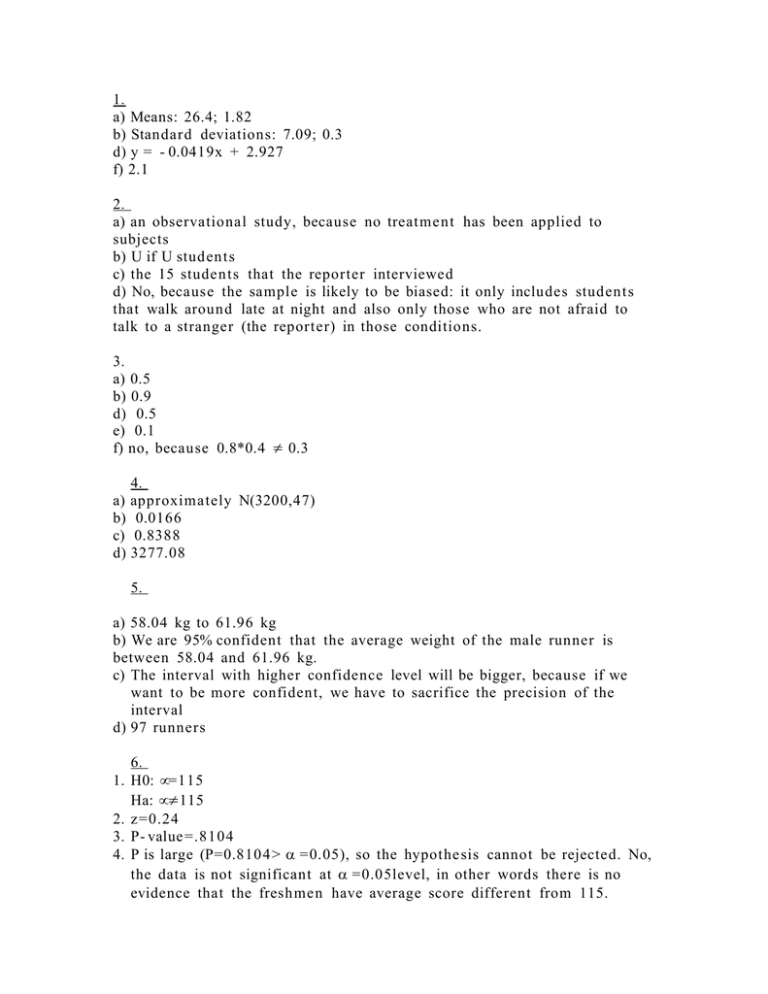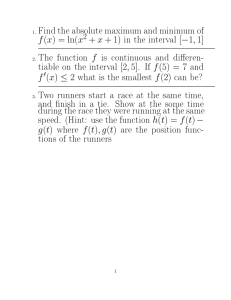1. a) Means: 26.4; 1.82
advertisement

1. a) Means: 26.4; 1.82 b) Standar d deviations: 7.09; 0.3 d) y = - 0.0419x + 2.927 f) 2.1 2. a) an observational study, because no treatment has been applied to subjects b) U if U student s c) the 15 students that the reporter interviewed d) No, because the sample is likely to be biased: it only includes student s that walk around late at night and also only those who are not afraid to talk to a stranger (the reporter) in those conditions. 3. a) 0.5 b) 0.9 d) 0.5 e) 0.1 f) no, because 0.8*0.4 ≠ 0.3 4. a) approximately N(3200,47) b) 0.0166 c) 0.8388 d) 3277.08 5. a) 58.04 kg to 61.96 kg b) We are 95% confident that the average weight of the male runner is between 58.04 and 61.96 kg. c) The interval with higher confidence level will be bigger, because if we want to be more confident, we have to sacrifice the precision of the interval d) 97 runners 1. 2. 3. 4. 6. H0: µ=115 Ha: µ≠115 z=0.24 P- value =.8104 P is large (P=0.8104 > α =0.05), so the hypothesis cannot be rejected. No, the data is not significant at α =0.05level, in other words there is no evidence that the freshmen have average score different from 115.








